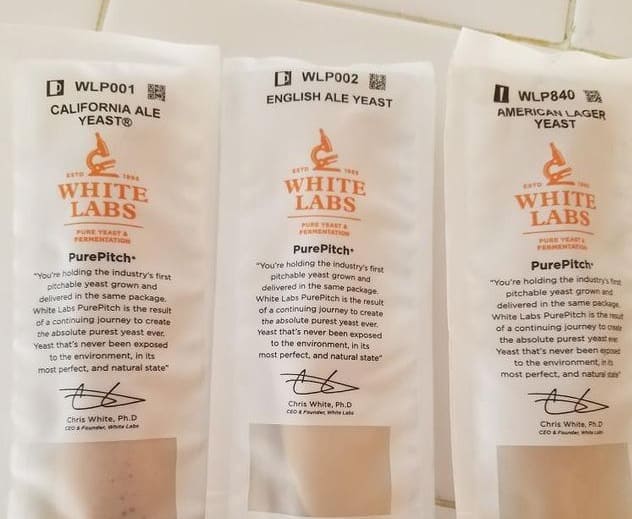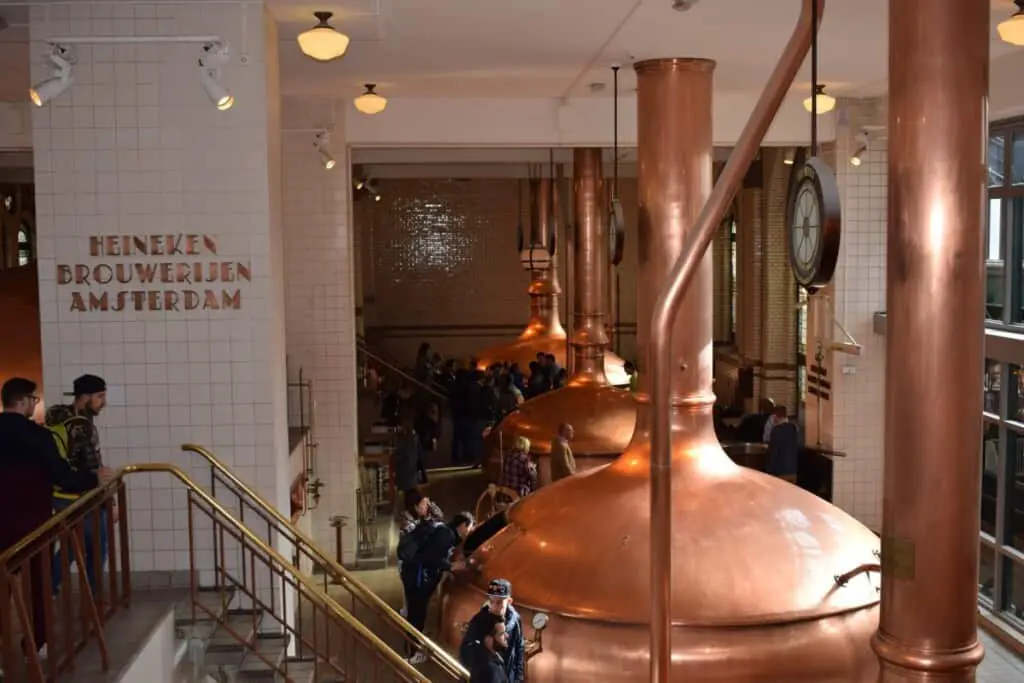
If you are like me, you’re constantly trying to adjust and tinker with your recipe’s in order to get them just right. But, sometimes you can’t quite hit the flavor profile you are looking for. One simple trick to solve the issue and differentiate your beer is to blend multiple yeast strains.
Blending yeast strains has many benefits. Mixed strains can achieve better flocculation, finish attenuation and give your beer a unique flavor. Ale, lager and wine yeast can all be blended together. However, some wine yeast strains cannot coexist and actively kill other yeast.
Yeast mixing is probably one of the most exciting parts of the homebrew and craft beer scene. It opens up so many new possibilities. In fact it’s only been a recent development that we have single yeast strains.
Throughout much of history yeast could not be isolated, thus resulting in unexpected outcomes and zero consistency.
Farmhouse Ales and the Origins of Mixing Yeast
As I mentioned earlier much of the origins of brewing involved multiple yeast strains. Thus funky farmhouse ales were the norm until recently in human history.
These beers tended to be slightly sour from untamed yeast and could never be consistent. Often times a mixture of bacteria and yeast would live in the beer giving it a funky sour flavor.
Over time, some would save yeast from beers that had a quality flavor and this yeast would be passed down for generations. One such yeast has become exceedingly popular.
This yeast known as Kviek yeast is seeing a resurgence and is technically a Nordic farmhouse yeast. Most of the original Kviek yeast was multi strain but now single strains are being singled out to provide certain fruity characteristics.
Open Fermentation leads to Mixed Yeast
There are some breweries that have been around for a very long time that still utilize open fermentation. This open fermentation method still utilizes a base yeast but other yeasts and funky flavors are invited to the party.

Open fermentation is typically done in a shallow and wide vessel. This allows for much more air exposure. This oxygen exposure early on in the fermentation process is beneficial and promotes flavor and yeast health.
Mixing Single Yeast Strains Sold by Labs
For the most part the yeast on the market is a mix of one strain, but White labs for example notates mixes of yeast on their sales chart with the notation of blend at the end.
There are some yeast packets that are on the market like WLP200 and many farmhouse or Kviek yeast that tend to be multistrain.
In the case of WLP200, I was not able to find it on any homebrewing supply websites. It may be for sale through White Labs or even a special order, but when you realize its just a blend of WLP001 and WLP002 then it starts to all make sense.
WLP200 was a successful experiment of blending yeast to achieve better flocculation, attenuation and fruity esters. It pulled together the best of both yeasts. You can check out the data here.
Some other examples of blended yeast sold by White Labs are.
- WLP060 American Ale Yeast Blend
- WLP080 Cream Ale Yeast Blend
- WLP067 Coastal Haze Ale Yeast Blend
- WLP575 Belgian Style Ale Yeast Blend
- WLP568 Belgian Style Saison Ale Yeast Blend
These are just a few of the possible mixes to give you an idea that it is possible. White labs is experimenting with mixtures to give the best results but there are endless combinations.
White labs keeps most of the yeast that its mixing a secret as its likely proprietary information. But its clear that mixing yeast has merit and advantages.
It’s clear yeast blending is creating all sorts of new flavors and the best way to find your favorite is probably visit an online homebrew shop and search yeast blend.
Benefits of Mixing Your own Yeast
The best way to mix yeast is to experiment. Think about what you want to accomplish and then take a look at what different yeast strains could get you to those goals.
You can mix any type of yeast that you want. Brewers yeast are not competitive with each other. They coexist peacefully. You can even mix some wine strains with brewers yeast, however not all wine strains are friendly.
Some wine strains have a kill factor that actively try to snuff out any other yeasts that are in their vicinity. So pitching one of these yeasts will likely result in a lot of dead yeast and one dominant yeast characteristic.
You may also have an issue with autolysis if you beer is sitting on top of a lot of dead yeast for a long time.
Sedimentation in Beer
Mixing yeast could help with beer sedimination. This is where there are fats, protiens and inactive yeast floating in your liquid. It could result in a much cloudier beer.
Mixing yeast could either increase your sedimentation or decrease it depending on your goal. If you are looking for a beer that is more clear in color, you could mix a high fruit flavor promoting yeast with a highly flocculant yeast.
This will result in more protein being consumed and less yeast being left in suspension promoting a clear beer. Protein and yeast consumption can also be affected during the mashing process.
Mixing Yeast Strains Finishes Attenuation
Attenuation refers to a yeasts ability to fully ferment a beers wort. Not all yeast has the same attenuation. Comparatively, not all yeast can consume all sugars.
Sugars can be broken down by mashing at various temperatures, also known as step mashing. This can only go so far and its up to the yeast to attenuate as much as it can. Different grains and adjuncts can also affect a yeasts ability to attenuate fully.
For example, corn starch or cane sugar is super easy for yeast to metabolize and can be attenuated much more easily than a barley starch.
At the end of the day attenuation is all about drying about your beer. As more sugars are consumed the beer will have less juiciness, which can be good or bad depending on your goals.
Mixing Yeast Strains Helps Flocculation
Lets say that you love brewing up a delicious hefeweizen that is full of delicious banana and clove flavors. The problem is you want the beer to be a bit clearer and not have so much yeast and protein stuck in suspension.
This is where mixing yeast could benefit you. If you are mixing a traditional hefeweizen yeast with something that flocculates a bit better with a clean flavor then you will end up with something a little bit less intense in banana flavor but less murky.
Alternatively, if you want to keep a lot of banana flavor but have some better flocculation you could add the second yeast a few days later. It’s in the first 72 hours where most of the yeast esters or flavors will come from. So you could end up with a beer with better flocculation and strong Hefeweizen flavor.
Mixing Ale and Lager Yeast During Fermentation
When it comes to mixing ale and lager yeast it is certainly possible, but temperature is the most important variable. Its also important when fermenting two different ale yeasts but and and lager yeasts together have a smaller window.
For this you will need a fermentation chamber to make it work. The reasoning is because if you don’t one yeast may gain superiority over the other if the temperature drifts to far in one direction.
Mixing an ale and a lager yeast can achieve one important characteristic, it can add fruity esters while remaining crisp and clean. The most likely temperature range you will need to ferment at is around 60F-70F. This is the level at which lager and ale yeasts can both remain active.
WLP080 Cream ale Yeast Blend
WLP080 is an example of a blended ale and lager yeast. They don’t reveal the actual yeasts used in this blend but the description of the blend is clear.
It reveals fruity notes and is clean and pilsner like, however it might be able to be improved upon as it produces some subtle sulfur notes that may be unpleasant.
This means it is possible to blend ale and lager yeast with beneficial results. So make sure to experiment and create amazing beer.
Learn More About Brewers Yeast
If you found this article on brewers yeast interesting you might like this one on why you don’t need to rehydrate dry yeast. Also the Result of Overpitching Yeast and its Impact on Flavor would be an interesting read.
